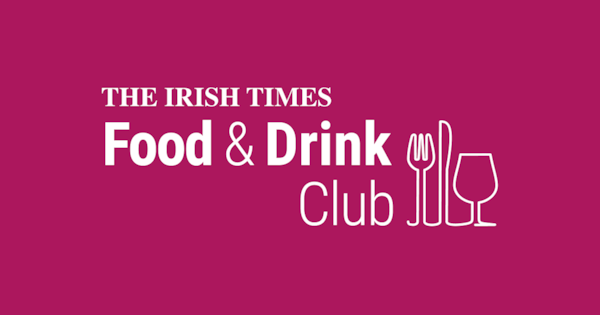The cost of groceries is climbing again, is it?
Unfortunately, yes. Figures published by the Central Statistics Office last Thursday point to a general rate of inflation of 1.8 per cent – which is on target – but when it comes to the food and nonalcoholic beverages sector, prices are 4.6 per cent higher than they were this time last year. Research from retail analysts Kantar Worldpanel this month was even gloomier, suggesting a rate of inflation of 5.3 per cent over the past 12 weeks.
But 4.6 per cent – or even 5.3 per cent – is not that much, is it?
Well, in isolation, perhaps not. However it has to be remembered that a 4.6 per cent year-on-year increase is on top of three years of price hikes up and down Irish supermarket aisles. The cumulative impact since the end of 2021 means Irish consumers are now paying well over 30 per cent more for groceries than they were four years ago.
What does that mean in cash terms?
A family who were spending €150 a week in 2020 are now spending closer to €225. Or well over €3,000 a year extra for exactly the same stuff. Many people are having to pay substantially more than that.
[ The cost of living in Ireland is nutsOpens in new window ]
Where are the biggest hikes being seen?
A pound of butter is now more than €1 dearer than it was a year ago, while cheese is up by an average of almost €1 per kilogramme. Milk is 27 cent dearer per litre. But the biggest increase over the past 12 months has been the price of beef and veal, which is now almost 22 per cent more expensive. Chocolate is 17.5 per cent dearer, while eggs, coffee and a whole lot more also cost a whole lot more than they did.
[ Ireland’s grocery prices are still soaring. How can that be?Opens in new window ]
Well that’s not good news. What’s behind the increases?
Pretty much everything. Irish consumers – and indeed those in many other countries – have found themselves caught up in an almost perfect storm with almost everything that could go wrong going wrong.
What do you mean by that?
Grocery prices started to climb as the pandemic came to an end in the winter of 2021 with global demand for energy and other products soaring after two years of being in the doldrums. Then Russia invaded Ukraine, which saw energy prices spike even further, while the cost of commodities such as wheat and cooking oil climbed dramatically. The climate crisis is having a huge impact on food prices, with cocoa and coffee particularly impacted.
Anything else?
Oh yes. Poor harvests across southern Europe, particularly in Spain and Italy have, in recent years, led to significant supply shortages and sharp price rises for key staples such as olive oil, tomatoes and fresh produce.
While energy prices eased back for a period in the early part of last year, wholesale gas and electricity prices spiked again during the winter of 2024. This was due to supply constraints in Europe, with the increases affecting food processing, refrigeration and transport costs. And there are ongoing supply chain issues, including container shortages and port delays. Geopolitical unrest – including the uncertainty caused by the Trump administration – has further fanned the flames of higher prices on global markets.
[ The era of cheap food is overOpens in new window ]
All of this is global but are there any price pressures at home?
There are environmental pressures and sustainability goals to be met in Ireland, and we have a lingering Brexit hangover and a significant increase in the minimum wage – up from €10.20 an hour to €13.50 (an increase of 32 per cent). Energy costs here are up more than a third over the past four years, and that has fed into higher prices too.
The retailers must be making a fortune on the back of the higher prices right?
Well, they insist they are not making any excess profits and what evidence we have would appear to support that. At the height of the cost-of-living crisis in the summer of 2023, when grocery price inflation was running at close to 17 per cent by some estimates, there were calls for the State to do something to help consumers with their weekly shopping. The Competition and Consumer Protection Commission (CCPC) conducted an investigation into pricing in Irish supermarkets but found no evidence of price gouging or profiteering.
So are the farmers making more money?
Almost certainly not. According to farmers they have had their margins eroded for years by what Denis Drennan of the Irish Creamery and Milk Suppliers Association termed “corporate retailers being allowed to dictate price backwards to the farmers, so that they could operate the ‘Cheap Food’ policy that had farmers systematically and deliberately underpaid.”
But all this is temporary, right?
Um, no. It seems likely that for many years up to 2022, the prices Irish people were paying in supermarkets were artificially low and we are now facing what Drennan described as a “new normal”.
Is there anything that can be done?
Politicians are calling for government action but we have been here before. Aside from a couple of inconsequential meetings hosted by the Department of Enterprise in the summer of 2023, and the CCPC study, nothing was done. It is hard to see what can be done this time either in the absence of legislative change that would give greater powers to the CCPC. This leaves it up to consumers, and many people are already doing what they can to cut costs – including shopping around, buying on promotion and switching to cheaper own-brand products.












